Back in the day, factory graphics weren’t just an afterthought—they were part of the personality. From massive hood birds to wraparound stripes and cartoon mascots, some of the loudest styling choices ever made rolled out of the factory gates in the ’70s and early ’80s. These weren’t just decals; they were declarations.
This list rounds up 10 classic cars that showed up with some of the wildest graphics straight from the showroom floor. Some had the horsepower to match, others just looked fast standing still. Either way, you weren’t blending in behind the wheel of any of these.
1970 Plymouth ‘Cuda AAR

The AAR ’Cuda didn’t just make noise—it looked the part too. Inspired by Dan Gurney’s Trans Am efforts, this Plymouth got a full-length strobe stripe that split into a “AAR” logo near the tail. The matte-black fiberglass hood with a functional scoop added just enough menace to the street package.
Underneath, it packed a 290-hp 340 Six-Barrel V8 and a side-exit exhaust that made sure everyone heard it before they saw it. Only 2,724 units were built in 1970, making this stripe-heavy street brawler rare and instantly recognizable.
1973 Pontiac Firebird Trans Am SD-455
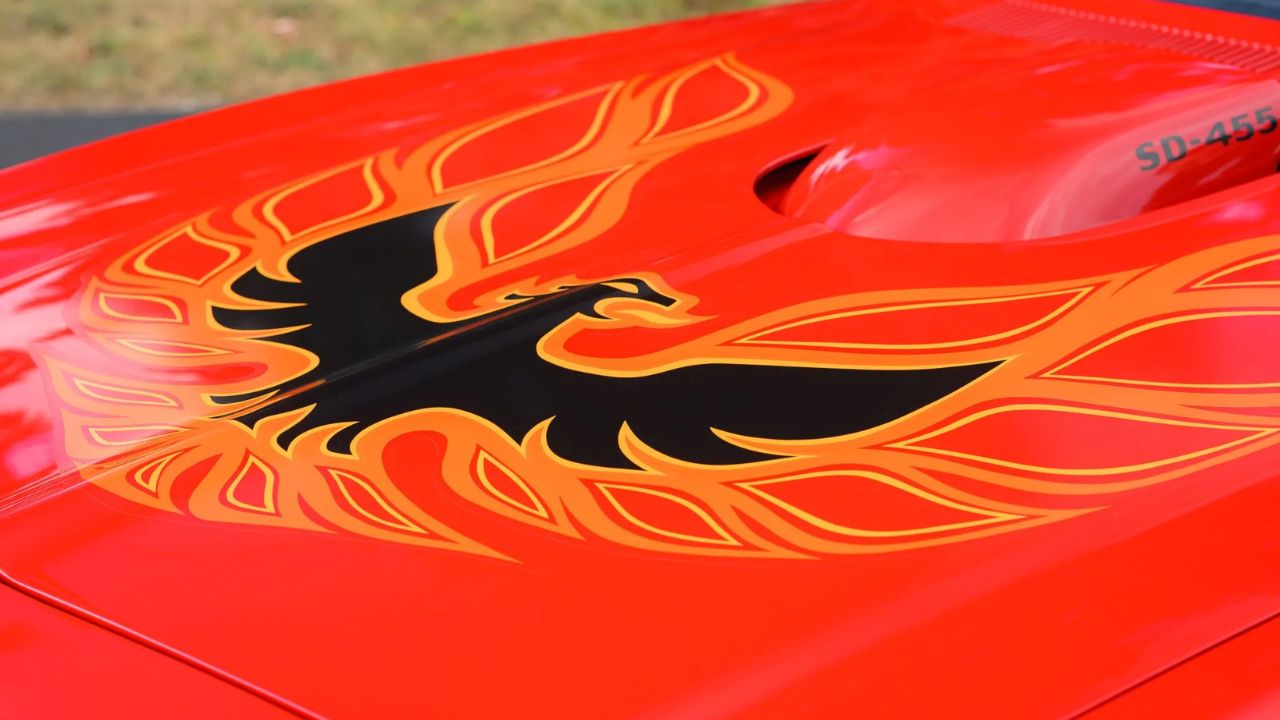
Pontiac didn’t mess around in ’73 when it dropped the “Screaming Chicken” across the Trans Am’s hood. The bird was massive and unapologetic, and it gave the car instant attitude—even sitting still. That graphic, paired with wide side stripes and honeycomb wheels, cemented its place in pop culture.
The SD-455 version was even wilder under the hood, producing a factory-rated 290 horsepower and torque figures north of 390 lb-ft. It wasn’t just a decal package—it was one of the last real muscle machines of the era.
1970 Dodge Super Bee
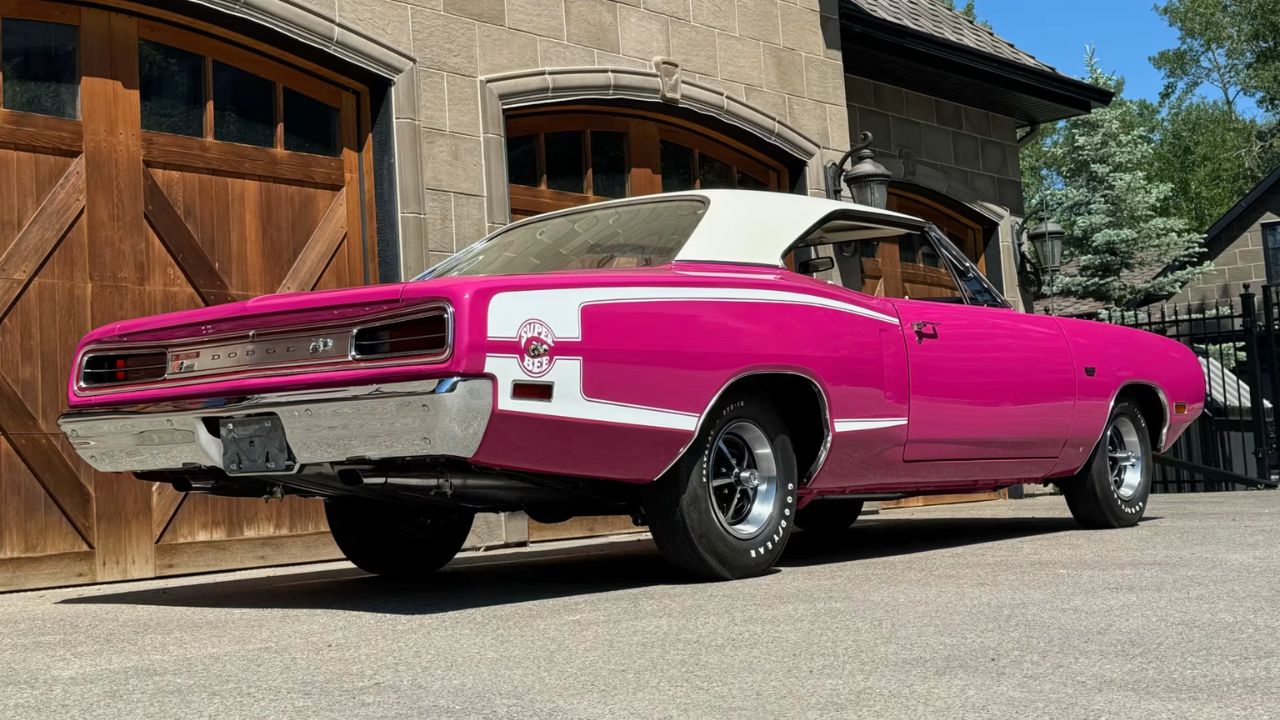
The Super Bee’s graphics were loud in the best kind of way. Dodge slapped a cartoon bee over racing stripes that wrapped around the tail—hard to miss even at highway speeds. Some cars got the “C-stripe,” others the bumblebee band, but either way, it was a rolling billboard for horsepower.
Buyers could order it with a 383, 440 Six Pack, or even a 426 HEMI. With over 15,000 Super Bees produced in 1970, a good number of them came out looking like something between a drag strip refugee and a Looney Tunes episode.
1971 Ford Maverick Grabber
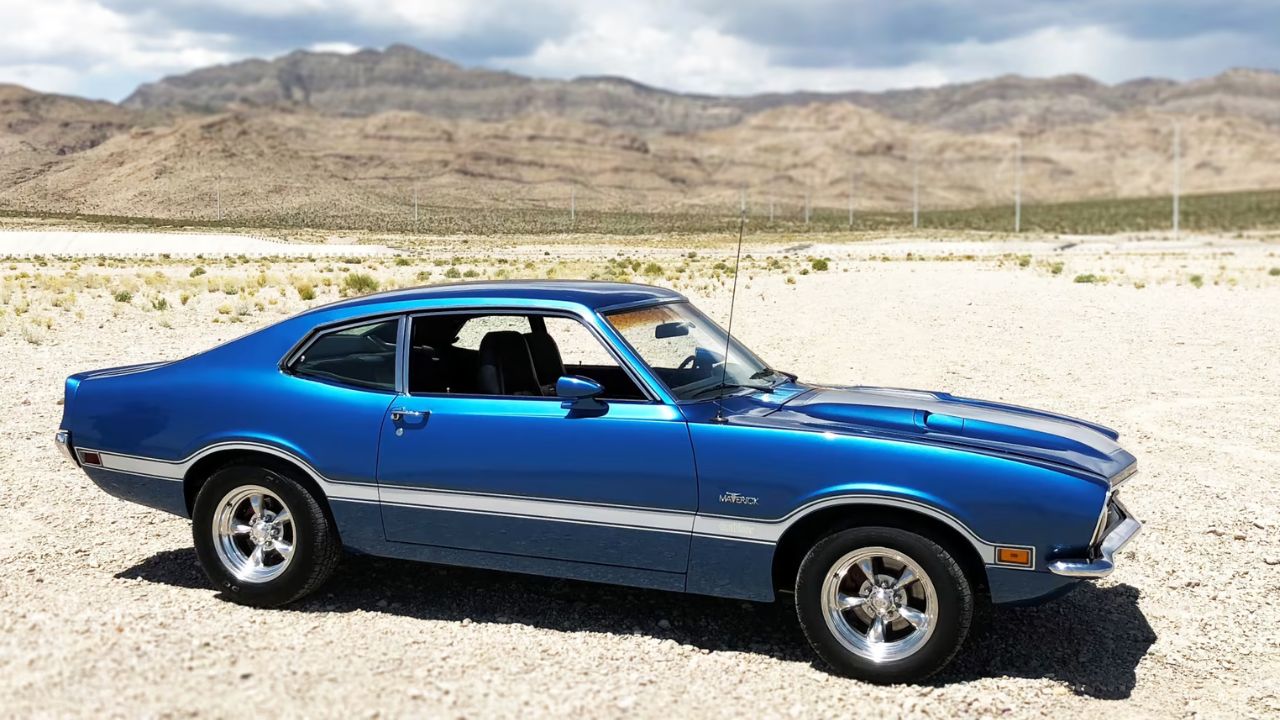
The Maverick Grabber might not have been the fastest, but it was definitely one of the flashiest. Ford dressed it up with twin racing stripes, a Grabber-specific hood, and wild side decals that stretched from front fender to rear quarter.
Under the hood, the Grabber offered a 302-cubic-inch V8, pushing out modest power but decent enough to make it fun. It sold well too—over 38,000 Grabbers were moved in 1971 alone, proving that graphics could do a lot of heavy lifting.
1977 Chevrolet Camaro Z/28

After a brief absence, the Z/28 returned in 1977 with graphics that made sure nobody missed it. The tri-tone striping that wrapped around the nose, fenders, and lower body gave it an almost NASCAR-ready appearance right out of the showroom.
Chevy backed it up with a 350-cubic-inch V8 rated at 185 horsepower—far from the muscle era heyday, but still quick for the late ’70s. Only about 14,350 Z/28s were produced that year, making it a visual standout in an otherwise toned-down performance landscape.
1976 Dodge Aspen R/T

Dodge gave the Aspen a jolt of style with the R/T package—think blackout grille, wild stripes, and R/T callouts that looked more aggressive than the car actually was. Still, the visual presence gave it some street cred in a decade where that mattered.
The R/T could be had with a 360-cubic-inch V8, but many buyers opted for the smaller 318. It was more show than go, but in an era of smog-choked powertrains, the look counted for a lot. Fewer than 6,000 R/Ts were sold in 1976.
1975 AMC Hornet X
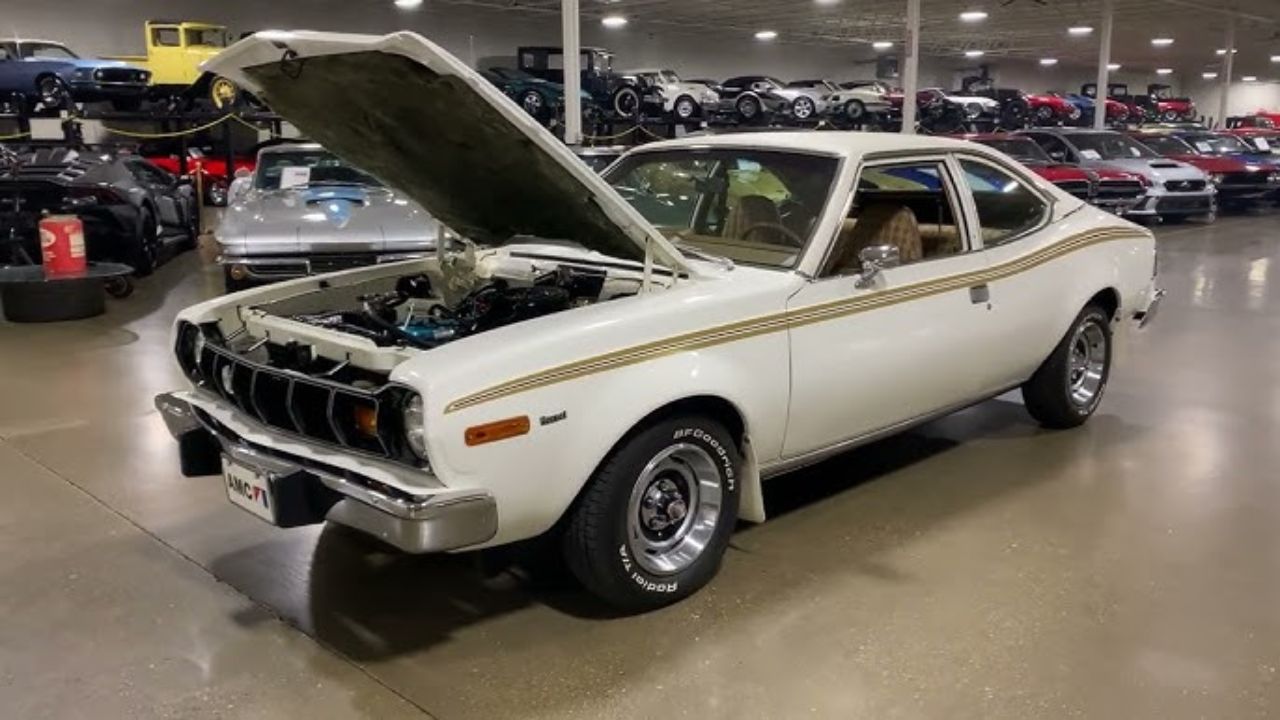
AMC leaned into youth appeal with the Hornet X package. Bold contrasting side stripes, X badges, and available bright color options gave this compact muscle hopeful a punchy attitude. AMC didn’t shy away from loud graphics, especially when they helped move inventory.
Under the hood, buyers could spec a 304-cubic-inch V8—not earth-shattering, but enough to keep things interesting. As the Mustang II stumbled into the mid-’70s, the Hornet X stood out for drivers who wanted visual flair without the cost.
1972 Buick GSX
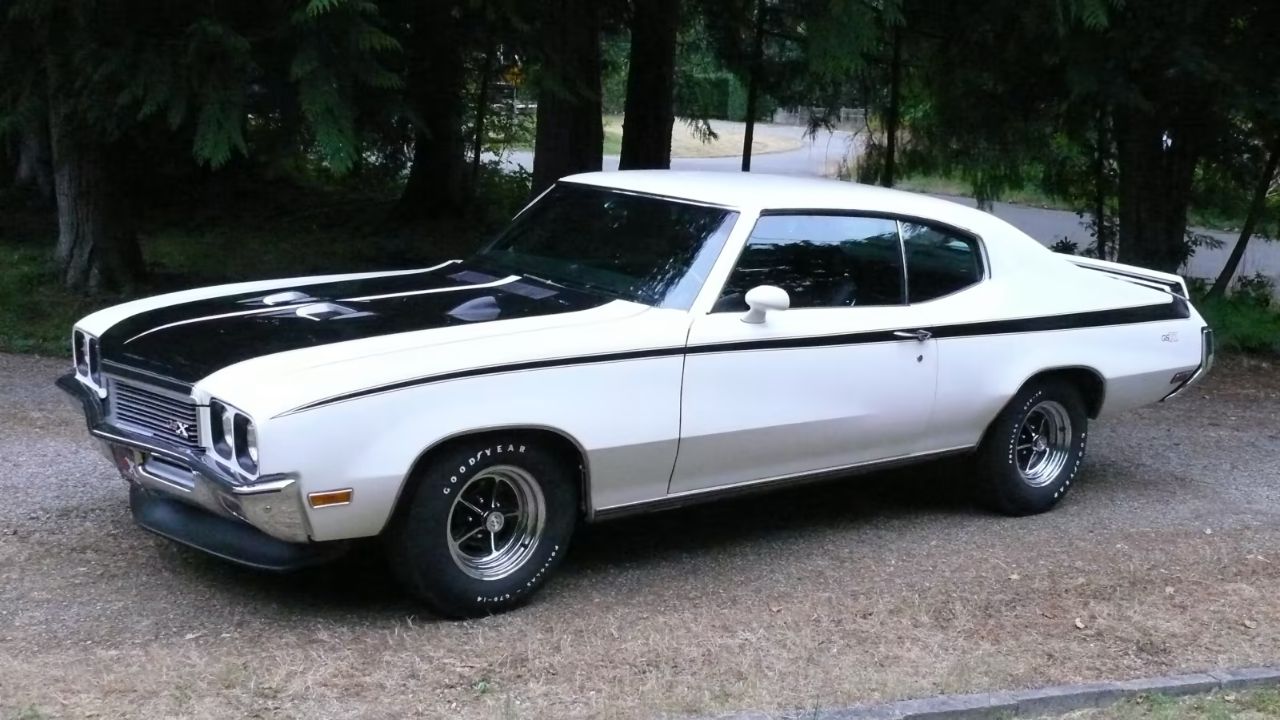
Buick isn’t usually the first brand people associate with wild graphics, but the GSX was a major exception. Dressed in Saturn Yellow or Apollo White with black striping and a spoiler, it looked ready to brawl. The stripes ran over the hood, down the fenders, and across the trunk.
Buick offered it with a 455 Stage 1 V8, putting down 510 lb-ft of torque—more than most big blocks of the era. Fewer than 700 GSXs were produced across all years, making this stripe-heavy sleeper one of the rarest and most underrated muscle cars out there.
1974 Dodge Dart Sport Hang Ten

Yes, Dodge made a surf-themed muscle car. The Dart Sport Hang Ten came with white paint, orange and red body stripes, and a shag-carpeted interior decked out with actual surf graphics. It was pure ’70s styling excess, straight from the factory.
Performance wasn’t forgotten—buyers could opt for a 360-cubic-inch V8 and bucket seats. It’s unclear how many Hang Tens were built, but they were never common, and even fewer have survived with their graphics intact. If you wanted flair with a side of beach bum, this was it.
1980 Pontiac Trans Am Turbo Indy Pace Car

The 1980 Indy Pace Car edition came dripping in decals—turbo callouts, two-tone paint, striping everywhere, and a massive Firebird decal on the hood. Even by Trans Am standards, it was loud, and Pontiac made sure you knew it was something special.
It came with a turbocharged 301-cubic-inch V8 making 210 horsepower—respectable, if not thrilling. About 5,700 were produced, and most were snapped up by collectors who appreciated the look more than the speed. Today, it’s a rolling reminder of just how far graphics went in defining an era.
Like Fast Lane Only’s content? Be sure to follow us.
Here’s more from us:

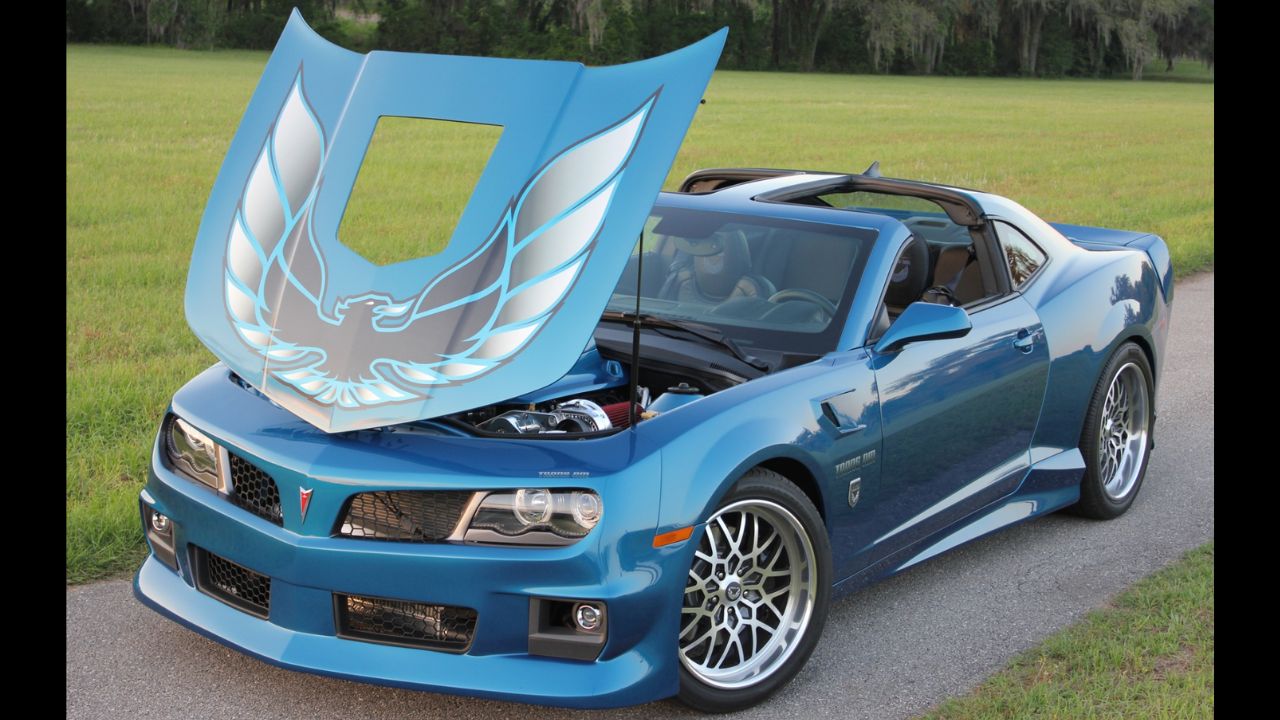
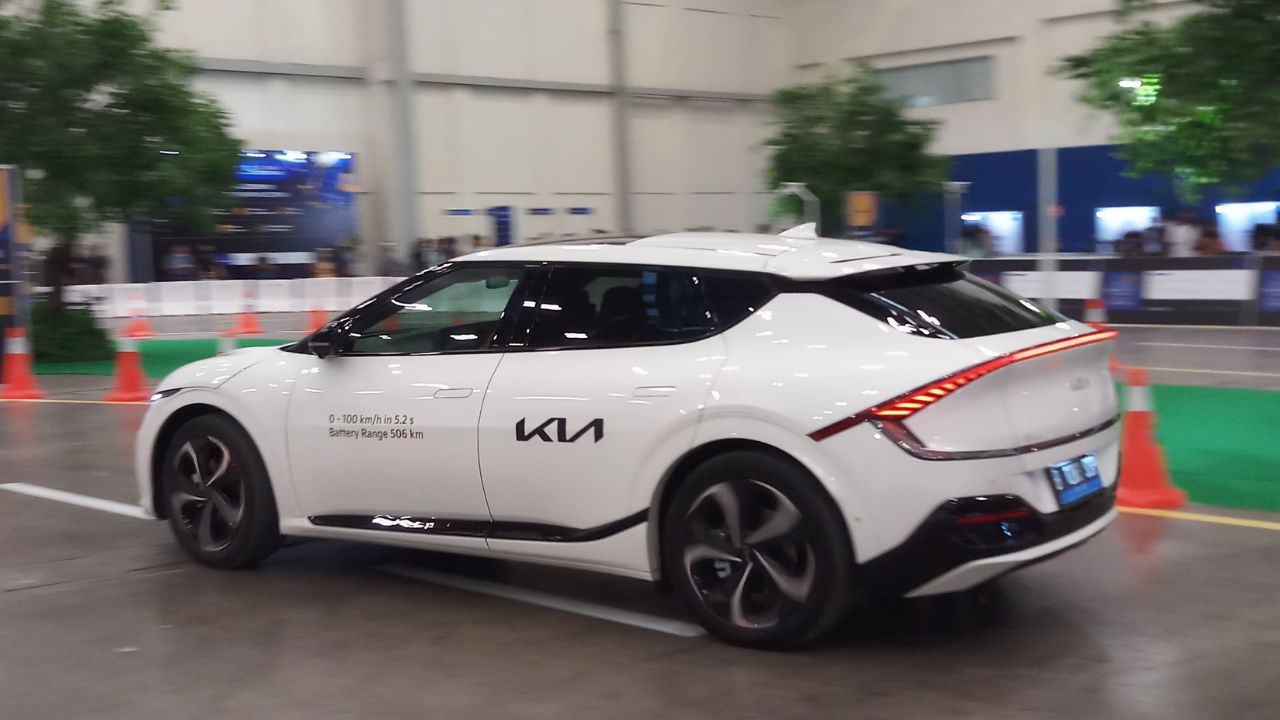



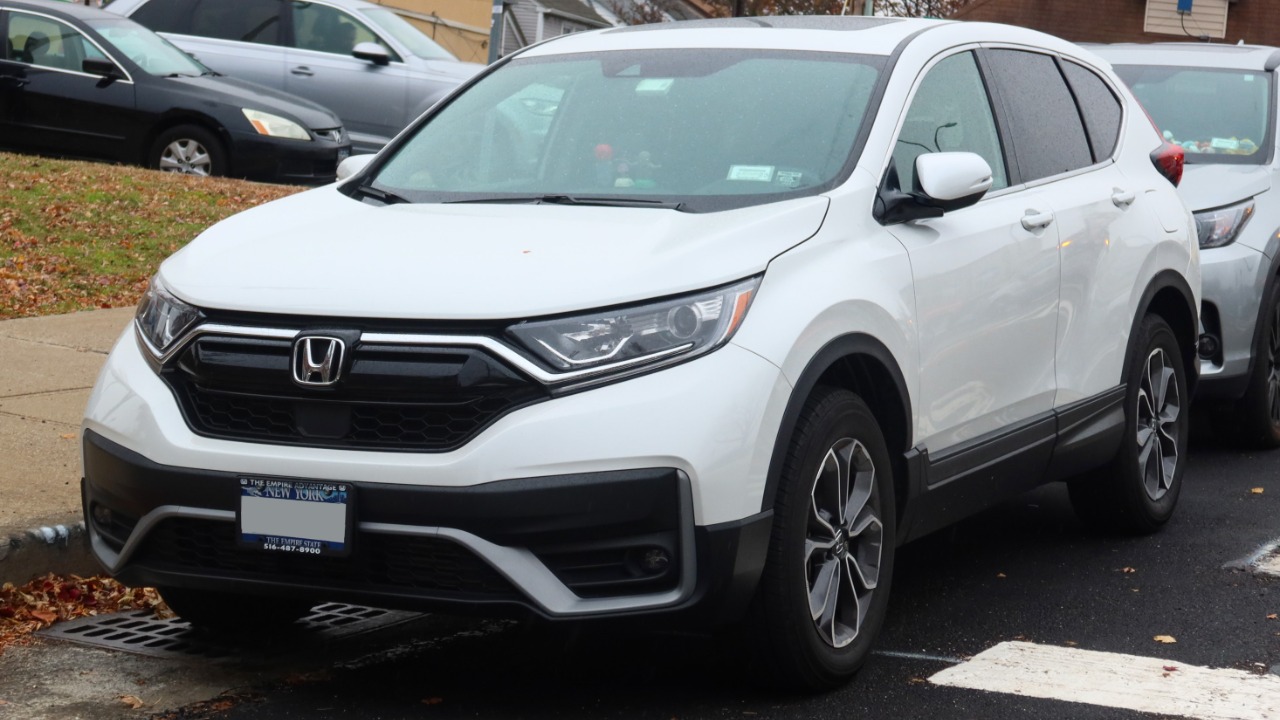
Leave a Reply